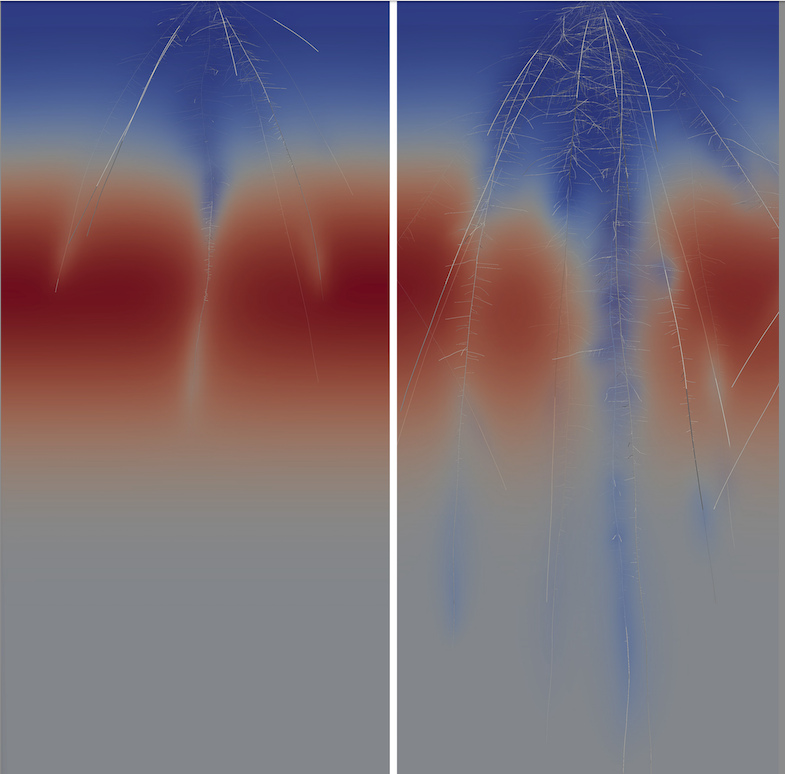
maize N capture modeled in OpenSimRoot
Authors
Perkins A, JP Lynch
Source
Annals of Botany, in press
Download Options
https://doi.org/10.1093/aob/mcab074
Abstract
Background and Aims
Domesticated maize (Zea mays ssp. mays) generally forms between two and six seminal roots, while its wild ancestor, Mexican annual teosinte (Zea mays ssp. parviglumis), typically lacks seminal roots. Maize also produces larger seeds than teosinte, and it generally has higher growth rates as a seedling. Maize was originally domesticated in the tropical soils of southern Mexico, but it was later brought to the Mexican highlands before spreading to other parts of the continent, where it experienced different soil resource constraints. The aims of this study were to understand the impacts of increased seminal root number on seedling nitrogen and phosphorus acquisition and to model how differences in maize and teosinte phenotypes might have contributed to increased seminal root number in domesticated maize.
Methods
Seedling root system architectural models of a teosinte accession and a maize landrace were constructed by parameterizing the functional-structural plant model OpenSimRoot using plants grown in mesocosms. Seedling growth was simulated in a low-phosphorus environment, multiple low-nitrogen environments, and at variable planting densities. Models were also constructed to combine individual components of the maize and teosinte phenotypes.
Key Results
Seminal roots contributed about 35% of the nitrogen and phosphorus acquired by maize landrace seedlings in the first 25 days after planting. Increased seminal root number improved plant N acquisition under low-N environments with varying precipitation patterns, fertilization rates, soil textures, and planting densities. Models suggested that the optimal number of seminal roots for nutrient acquisition in teosinte is constrained by its limited seed carbohydrate reserves.
Conclusions
Seminal roots can improve the acquisition of both nitrogen and phosphorus in maize seedlings, and the increase in seed size associated with maize domestication may have facilitated increased seminal root number.

